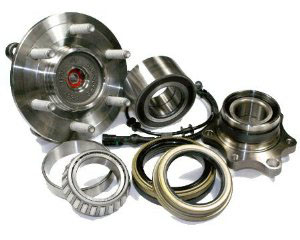The temperature characteristics of bearings
Many of the devices we use on a daily basis contain bearings. Take castors for example, the bearing is the most critical part of any rotational device, be it a ball bearing or a roller bearing.
There are many different types of bearing including the classic ball bearing, roller bearings and needle bearings. Each type is suitable for use in a different application, depending on whether axial or radial loads need to be catered for.
All bearings have to contend with friction when in motion and with friction comes heat. Even the bearings which are manufactured to high tolerances and have smooth rotational surfaces still see heat rises as the speed of the bearing increases. However, when a bearing rotates at a constant speed the heat level will stabilise and the bearing should stay at this temperature whilst in operation.
The time it takes until the bearing temperature stabilises will depend on a number of factors, but the speed the bearing is rotating at, the type of bearing it is, the lubrication system used and the size of the bearing will all play a part in this.
Normally it takes only minutes for bearing heat levels to stabilise when the bearing is rotating at a constant temperature. But in larger bearings it may take hours to do so. However, if the bearing temperature continues to rise after this point a problem may exist with the bearing.
The life of a bearing may be reduced considerably if the bearing is used for any length of time whilst temperatures continue to rise. Apart from destroying the lubricant in the bearing, the smooth raceway faces will soon start to pit as the metal fatigues. High bearing temperature can be put down to incorrect installation, fitting creep, bearing damage, or improper loading.
There are many different types of bearing including the classic ball bearing, roller bearings and needle bearings. Each type is suitable for use in a different application, depending on whether axial or radial loads need to be catered for.
All bearings have to contend with friction when in motion and with friction comes heat. Even the bearings which are manufactured to high tolerances and have smooth rotational surfaces still see heat rises as the speed of the bearing increases. However, when a bearing rotates at a constant speed the heat level will stabilise and the bearing should stay at this temperature whilst in operation.
The time it takes until the bearing temperature stabilises will depend on a number of factors, but the speed the bearing is rotating at, the type of bearing it is, the lubrication system used and the size of the bearing will all play a part in this.
Normally it takes only minutes for bearing heat levels to stabilise when the bearing is rotating at a constant temperature. But in larger bearings it may take hours to do so. However, if the bearing temperature continues to rise after this point a problem may exist with the bearing.
The life of a bearing may be reduced considerably if the bearing is used for any length of time whilst temperatures continue to rise. Apart from destroying the lubricant in the bearing, the smooth raceway faces will soon start to pit as the metal fatigues. High bearing temperature can be put down to incorrect installation, fitting creep, bearing damage, or improper loading.
About the Author:
Are you in need of a supplier of castors and wheels? Browse the range of castors at bearingboys.co.uk now.


0 Comments:
Post a Comment
Subscribe to Post Comments [Atom]
<< Home